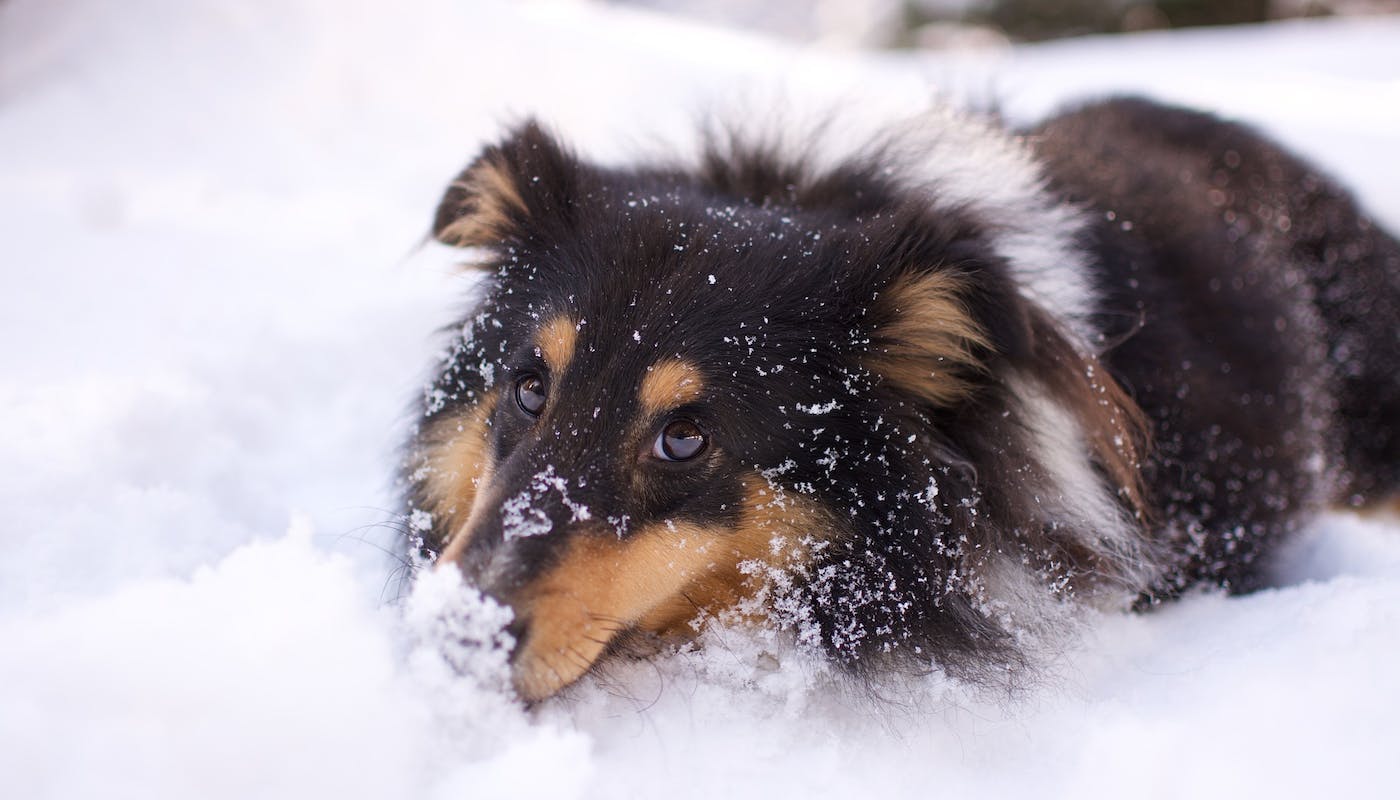Winter Walkies: Tips and Advice
Snow, ice and frost transform our landscape into a magical setting, which our dogs – given the right protection – can enjoy right along with us. Some dogs love the snow, and are built for it even! but some need a little extra help from us so we’ve rounded up the best advice and tips for safe winter walkies with your dog.
When Is It Too Cold to Walk Your Dog?
When temperatures drop to 40°F (4 °C) or lower, there is an element of risk in walking your dog. Larger and thicker-coated dogs will fare better than small dogs. Many experts say that dogs shouldn’t be walked at all once it hits freezing (0 °C / 32°F).
When it’s cold, be cautious and observe your dog’s behavior. They’re likely to enjoy a quick leap in the snow but will let you know when they’re uncomfortable (slowing down or lifting paws are some of the first signs). Ice or snow can become compacted on their paws and cause extreme discomfort. Shivering is a warning sign: it’s time to bring your dog indoors to warm up.
If your dog is bigger and built for a cold climate (like Huskies, Chow Chows and Tibetan Terriers) then you can take them for short walks, as long as they’re happy.
Tips on Walking in Snow
Winter walks can be incredibly beautiful, but they can also be dangerous. Follow these basic guidelines:
- Stick to walking routes that you know. This way, you and your dog will already be aware of the ponds and hazards which may be covered by snow.
- Frozen puddles are okay for dogs to walk over, but keep them away from frozen ponds: you never know how strong the ice will be.
- Try to stop your dog from eating snow – we know it’s difficult when they’re so overjoyed that they’re sticking their noses in it – if it’s on a route which may have been spread with salt or chemicals.
- Take pictures! The snowy backdrop is best captured when the sun is low but you can increase the exposure or increase contrast for better quality pics. Try throwing snowballs for your dog and keep snapping! Check out this and other great tips at Ellen Zangla Photographyhttps://ellenzanglaphotography.com/seven-tips-for-taking-better-photos-of-your-dogs-in-the-snow/.
- Keep walks short; if your dog needs more exercise, take frequent but shorter walks. This reduces the risk of hypothermia.
- When you get home, rub down your dog’s feet – checking for compacted ice and wiping away chemical de-icers which they may have walked through.
- If you notice your dog’s paws starting to become dry or crack, apply paw balm or petroleum jelly as a protective coating – or try snow boots (see below)!
- Check your dog’s leash and harness at the same time. When they’ve been wet, clips can start to rust and fail, but you can prevent it with care.
Snow Boots For Everyone…
Even if you don’t live in a very cold part of the country, you might appreciate a pair of snow boots. Look for a boot with a thermal lining and comfort sole. They’ll take you through muddy puddles, forest and snow all winter long.
And what about your dog? In very icy conditions, they’ll benefit from snow boots too. Why? Firstly, because industrial de-icers are toxic to dogs and they may lick it from their paws. Secondly, because ice tends to gather and harden between those little dog toes, causing discomfort and even lesions.
When choosing snow boots, pay attention to the fit. If they’re uncomfortable, they could completely ruin your dog’s walk – and waste your money.
Tips on Choosing a Dog Coat
If your dog shivers on a walk, it’s time to buy a dog coat. Puppies, unwell and elderly dogs have a higher risk of contracting hypothermia. If your dog’s coat is fine (or you can see skin easily) they’ll probably need a coat. Many canine breeds have superb natural coats, but some of them need a little help to stay comfortable during winter.
- Firstly, let your dog skip their clipping appointment when winter approaches. They will stay warmer with extra fur!
- Puppies and dogs weighing less than 10lb should wear a coat in winter, according to the AVMAhttps://www.avma.org/.
- You’ll need three key measurements: take a tape measure from collar to base of tail (along the spine) and then take two circumference measurements at the neck and widest point.
- Choose a design that fastens around the neck, instead of a sealed neck-hole that you have to squeeze over the dog’s head. It should fit snugly but not be too tight, so that your dog can move freely.
- If you walk at night, look for a coat which has a reflective strip or panel. This helps pedestrians and drivers to see your dog.
- A lightweight coat in a polyester blend will dry more quickly. Wool can be itchy but a fleecy lining is cozy for your dog.
- If your dog is a chewer, choose a jacket without any chewable parts!
